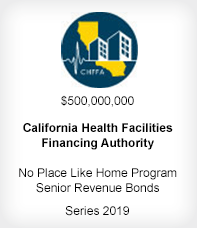 Call it ethical, green, sustainable or socially responsible investing, the demand for investments that generate both social change and financial returns for investors is on the rise. There is growing momentum in the municipal marketplace for the use of environmental, social and corporate governance (ESG) criteria to measure the societal impact of an investment.
Call it ethical, green, sustainable or socially responsible investing, the demand for investments that generate both social change and financial returns for investors is on the rise. There is growing momentum in the municipal marketplace for the use of environmental, social and corporate governance (ESG) criteria to measure the societal impact of an investment.
Although there has been some convergence on terminology associated with ESG debt issuance in the municipal market, it is not uniform. Green bond projects are generally viewed as those that contribute to environmental sustainability. Some examples are: green building construction; energy efficiency; pollution prevention and control; clean water and wastewater management (including flood/stormwater reduction); and climate change adaptation, including observation and early warning systems (e.g., forest fire and hurricane). Social bond projects are those that address specific social issues like cybersecurity, homelessness, home ownership, and equity in access to services such as healthcare or education. Sometimes bonds meet the classification for both green and social.
EXAMPLES OF ESG INVESTMENT CONSIDERATIONS
Environmental
- Water scarcity
- Climate change
- Waste and pollution
- Energy efficiency
- Biodiversity and deforestation
Social
- Human rights
- Cybersecurity
- Gender and diversity
- Community development
- Employee engagement
Governance
- Transparency
- Board composition
- Executive compensation
- Business ethics
- Shareholder relations
- Political contributions
Demand side
Providing investors with ESG qualifications for a municipal bond issue allows investors to choose bonds they believe will make a positive impact on society and the world at large. Over the past several years, investment in ESG-designated bonds (green and social) has grown significantly at home and abroad – aided by a shift in generational preferences and more integration into broad-based investment analysis. This is evidenced by the number of municipal bond fund managers that have set up funds with a green or social impact focus.
According to Bloomberg, U.S. municipal market green bond issuance increased 230% from $4.4 billion in 2018 to $14.5 billion in 2020, but these metrics do not include investor-identified or investor-certified bonds or social bonds, which account for a significant portion of the market. Many investors rely on their own methodology to evaluate the level of greenness or social impact in determining whether the bonds align with their investment objectives as well as potential credit risks associated with issuer-specific ESG-factors. The increased demand by investors for bonds that fit these criteria has resulted in a growing chorus of market participants encouraging governmental issuers to enhance their disclosure about how the issuance qualifies for the ESG designation.
A RANGE OF ESG APPROACHES
The goals of the following ESG strategies range from more “investment first” at the top, to more “impact first” at the bottom.
- ESG Aware: May consider principles in the investment analysis
- ESG Integration: Seamlessly blends consideration of ESG principles with other fundamental and technical insights to develop full perspective on a company’s business prospects
- Exclusion: Excludes companies or sectors that do not align with faith or personal values, or that have poor ESG ratings
- Thematic: Addresses specific trends such as clean energy, water, poverty or gender equality
- Impact: Intentionally selected to generate positive, measurable, social or environmental outcomes alongside financial return
Supply side
While on the demand side, money managers have been building ESG investing platforms for several years, on the supply side, issuers have been hesitant to get involved in a new type of issuance that requires additional effort and verification expense without a proven benefit, such as reduced interest cost. As the regulatory and political landscape for ESG-designated municipal bonds expands, investor demand is expected to grow, which may lead to a price differential for issuers. This includes the potential to broaden the investor base by attracting crossover buyers (especially on taxable bonds) that have ESG mandates but haven’t yet looked at municipal bonds to fill those mandates.
As part of their responsibility to provide material and accurate disclosure to investors, the use of an ESG designation may require additional disclosure. For example, green bonds that address resiliency will likely require the issuer to address risks to the issuer’s future ability to generate funds needed to repay the bonds, and require ongoing updates to the disclosure.
Particularly within the environmental segment of ESG, there is increasing demand for issuers to provide accurate and ongoing disclosure regarding sustainability, including potential risks from climate change. This is a daunting task as it requires issuers to make assumptions about what will happen in the future if current issues aren’t addressed. The exact form and nature of this type of disclosure is currently a topic of discussion by industry participants.
The Government Finance Officers Association (GFOA) just released its first-ever recommendation on ESG disclosure to guide state and local governments on best practices related to environmental risk, and the Securities and Exchange Commission recently announced the creation of a climate and ESG task force in its enforcement division. The 22-member, newly formed group is tasked with identifying ESG-related misconduct and, in particular, any material gaps or misstatements in issuers’ disclosure of climate risks under existing rules.
Continued growth
Despite the fluidity of the ESG designation and disclosure process in the municipal space, prominent issuers continue to issue ESG bonds. Raymond James has senior managed more than $1.8 billion in green and social bond issues since the first green bond issuance in 2014 for a variety of issuers across the nation, and in 2020, the firm ranked as the sixth leading underwriter nationally of senior managed green bond issues.*
In November 2019, Raymond James served as book-running, joint senior manager for the California Health Facilities Financing Authority’s inaugural No Place Like Home program social bond issuance, which received The Bond Buyer’s Deal of the Year Award. More information on the award can be found here. The $500 million issue generated more than $2.2 billion in orders. The social bond designation brought in $596 million (26%) of those orders from investors self-identified as having ESG or socially responsible investing objectives.
“We were very pleased to see $596 million in orders from 13 investors with environmental, social and governance (ESG) and socially responsible investing (SRI) objectives,” noted California State Treasurer Fiona Ma, who added, “In addition, we are delighted to have received $200 million in orders from 18 local government investment funds, including 14 from California. This deep and broad base of investors demonstrates the market’s support for the No Place Like Home program.”
According to Bloomberg, green bond issuance is up over 13% so far this year. Looking ahead, strategists are busy analyzing how a new pro-environment administration, COVID-19, social justice initiatives and climate change may affect ESG bond issuance and demand going forward. Ted Hynes, head of municipal sales at Raymond James, believes the number of investors looking for ESG investments will continue to grow. “The number of investors we are speaking to about ESG bonds has grown tremendously over the past few years,” Hynes said. “There is significant room for growth, and I don’t see that slowing down any time soon.”
*Source: Bloomberg; based on total par amount
Please join us for a live webinar on the rise of ESG in the municipal marketplace
Call it Ethical, Green, Sustainable or Socially Responsible Investing, the demand for investments that generate both social change and financial returns for investors is on the rise.
Join us on Earth Day as Raymond James hosts a panel of experts to discuss the state of the ESG market in the municipal space from both the issuer and investor perspective.
WHEN:
Thursday, April 22, 2021
3:00 PM ET
Registration is required for this webinar. After registering, you will receive a confirmation email containing information about joining the webinar. For easy access, please download the Outlook invitation to your calendar.
ADDITIONAL DETAILS
Panelists
Patrick Becher // Executive Director
Upper Mohawk Valley Regional Water Finance Authority (NY)
Eric Glass // Impact Investor
Alliance Bernstein
Terry Goode // Senior Portfolio Manager, Tax-Exempt Fixed Income
Wells Fargo Asset Management
Ksenia Koban // Senior Vice President
Payden Rygel
James Pruskowski // Managing Director, Portfolio Manager, Head of Municipal Institutional
BlackRock Financial
Q&A
There will be a “live” Q&A session offered during this call. If you have specific questions you’d like addressed, please submit those in advance to Ashlea Roederer at ashlea.roederer@raymondjames.
Replay
There will be a replay available for this webinar.
About Raymond James Public Finance
Built on the guiding principles of deep relationships, innovative ideas and superior execution, Raymond James consistently ranks among the top 10 senior managing underwriters of U.S. municipal bonds.* Our veteran bankers and aggressive underwriters work with municipal and not-for-profit issuers nationwide to find customized, comprehensive solutions for their next project. Visit rjpublicfinance.com to learn more about what our team can do for you.






